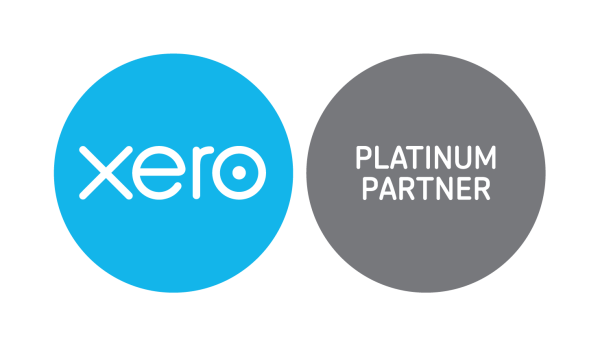Pros and Cons of Xero Payroll

Pros and Cons of Xero Payroll
I sometimes recommend Xero Payroll, and sometimes I do not. Here is what you need to know to help decide whether Xero Payroll could be a good fit for your business.
Pros
- Low Cost
- User friendly for regular straight forward payruns
- Separates Holiday Pay from Annual Leave, as per NZ legislation
- Handles both non-GST and GST registered contractors, and withholding tax within the same system
- Has a nice app with heaps of handy features
- Useful time sheeting
How much is NZ Xero Payroll per month?
On the Starter and Business Standard Xero, Payroll costs $10 a month for the first employee, and $1.00 per month for every employee after that.
On the new plans, Payroll is bundled and is not available as an addon. The Grow Plan includes 1 employee, the Comprehensive Plan - up to 5 employees, and the Ultimate Plan - up to 10 employees with an option to add on more.
Is Xero Payroll easy to use?
Yes, it has a very friendly user interface, just like the rest of Xero. It also provides a user friendly app for employees where they can enter timesheets and apply for leave.
Cons
Xero Payroll is not full service
That means there is no live help desk where you can phone up and ask questions. Just like normal Xero, you can log a support ticket and get email support, and Xero will call you only if all else fails. I have never experienced Xero support changing or fixing anything for you in payroll, they will only instruct you on how to use the software to fix it yourself.
Some feedback about the support is that it's limited to how to use the software, rather than being able to get general advice on how to apply legislation in your particular business situation.
Xero Payroll is not a Payroll Intermediary
In New Zealand some payroll providers are “intermediaries”. Xero Payroll is not. An Intermediary can pay your staff on your behalf, and also take responsibility for paying IRD. Using an intermediary means you press the button to finalise the pay, and the payroll provider does the rest including ensuring IRD filings are made correctly and on-time.
With Xero Payroll, the software just keeps the records but you still need to pay your staff through the bank, and pay IRD the PAYE when it's due (usually 20th of the following month) – and you are responsible for ensuring filings and payments to IRD are correct and made on time.
Annual Leave and Sick Leave is held in hours
In NZ, Annual Leave and Sick Leave is accrued in Days / Weeks, not hours however Xero Payroll keeps these leave balances in hours. Sometimes it’s an easy conversion, such as for salaried staff, but with part-time and flexible staff it can be a cause of confusion and errors. This is changing, but as of Feb 2025 I haven't seen it in the Xero files we are working with right now.
The most common errors I get involved with are when annual leave balances are incorrect, as well as when annual leave has not been paid out at the correct rate. I've written a blog about common issues with annual leave in Xero Payroll and how to fix them.
There are some situations with payroll (not just Xero) where manual adjustments are needed but there may be no warning or notification about this, leading to adjustments getting missed. The most common missed adjustment is changing the number of hours representing Annual Leave or Sick Leave when an employee changes their standard hours. This may not come to light until months or years later.
Ordinary Weekly Pay Calculations
If an employee does not work regular hours, and the hours change all the time and cannot be predicted then Ordinary Weekly Pay might need to be worked out as a Average from the previous 4 weeks pay. Xero does not do this automatically. This means, for many businesses with employees who work variables hours, each time they take Annual Leave, manual calculations have to be made to ensure the employee is not accidentally underpaid.
Most Recent Pay Only can be edited
If a historical error is discovered in the payroll, you cannot edit the error without reversing and deleting all payruns since that error. Instead an Unscheduled Payrun must be used to add in correction entries.
With a full service payroll provider such as iPayroll, helpdesk staff will actively assist you to solve any issues, and make changes in the file on your behalf. Xero will generally only give you instructions on what to do.
Employees need to be reloaded for a new contract
If an employee changes their terms of employment from casual to permanent, they need to be reloaded in Xero Payroll as a new employee. One reason is that Xero Payroll doesn’t have any flexibility to control annual leave accrual dates separate from employment start dates.
Will Xero Payroll suit your business?
I might recommend Xero Payroll if the following conditions apply:
- Employees are on regular hours
- The administrator has a good understanding of NZ payroll legislation
- The business has some kind of support to have payroll questions answered
- There are no more than 20 employees
Otherwise I generally recommend a full service intermediary payroll system. My favourite is iPayroll. Why?
- There is a real person to talk to when you need it
- They help you sort out any issues rather than just giving you technical instructions on how to sort it yourself
- iPayroll will remind you if you forget to run your pay
- You wont be paying IRD penalties for late filing
It’s more expensive than Xero Payroll. But you won’t be potentially paying someone like me to sort out messes discovered years later.
Yes, I am an iPayroll Partner, and I do receive a small trailing commission on referrals (if I call them before you do), but that’s not why I often recommend them. Errors in payroll have the potential to be very expensive, both in IRD penalties and creating crippling employee grievances. My view is, why take the risk?
Sorting out Xero Payroll messes is one of my specialities, and the Living Business team run payroll on Xero / iPayroll / Smartly. Find me at for a complimentary chat about whether Xero Payroll might be good for your business.
